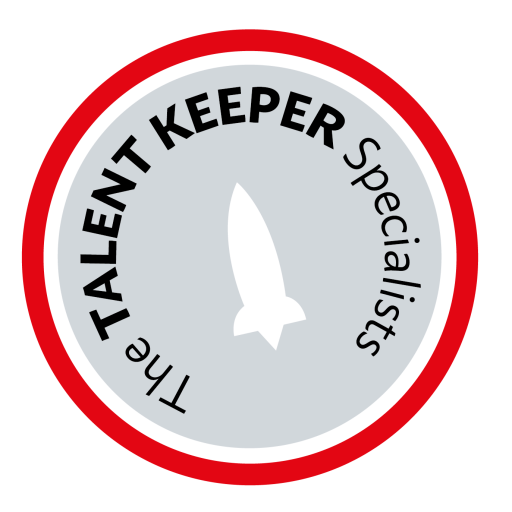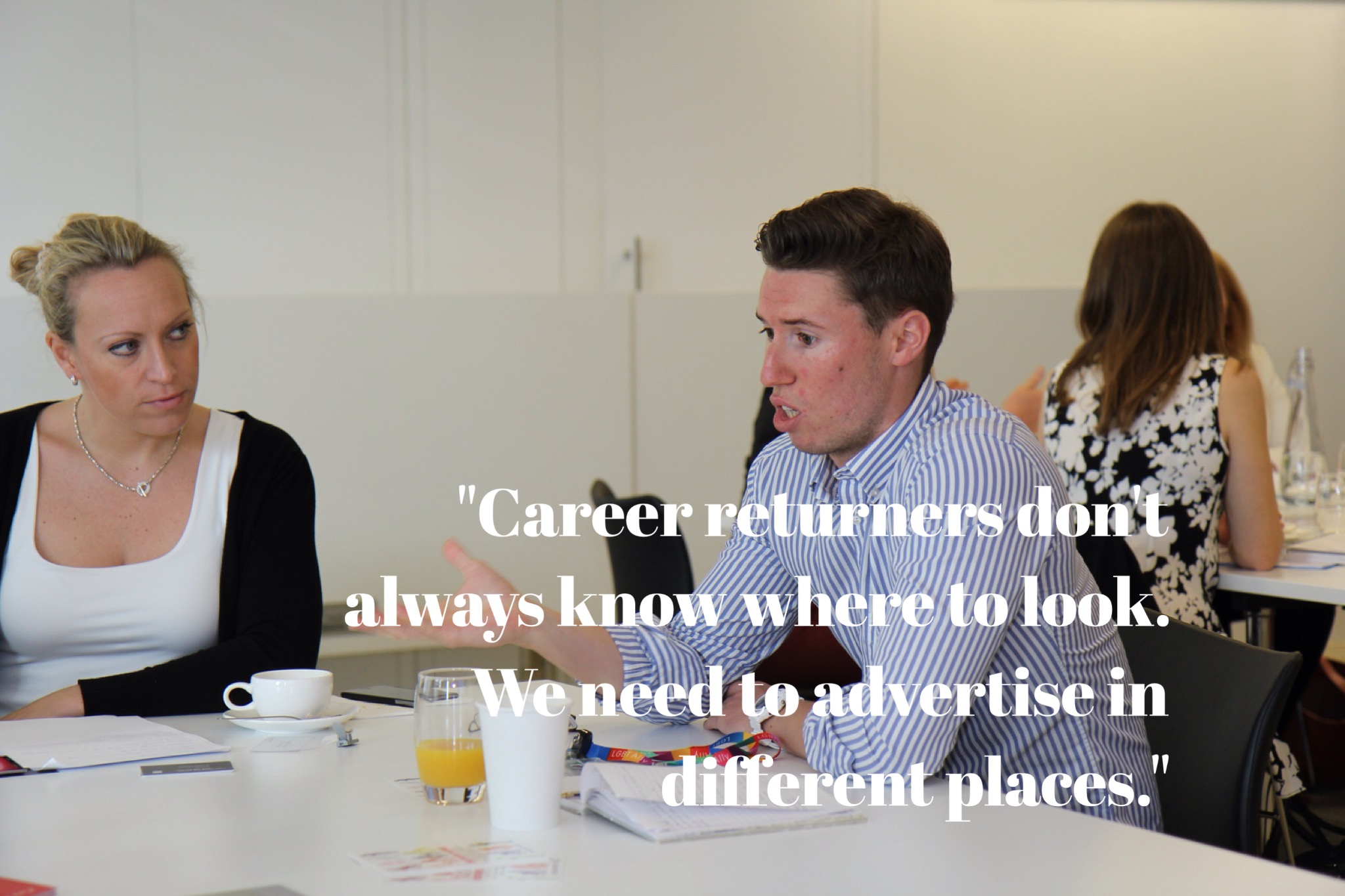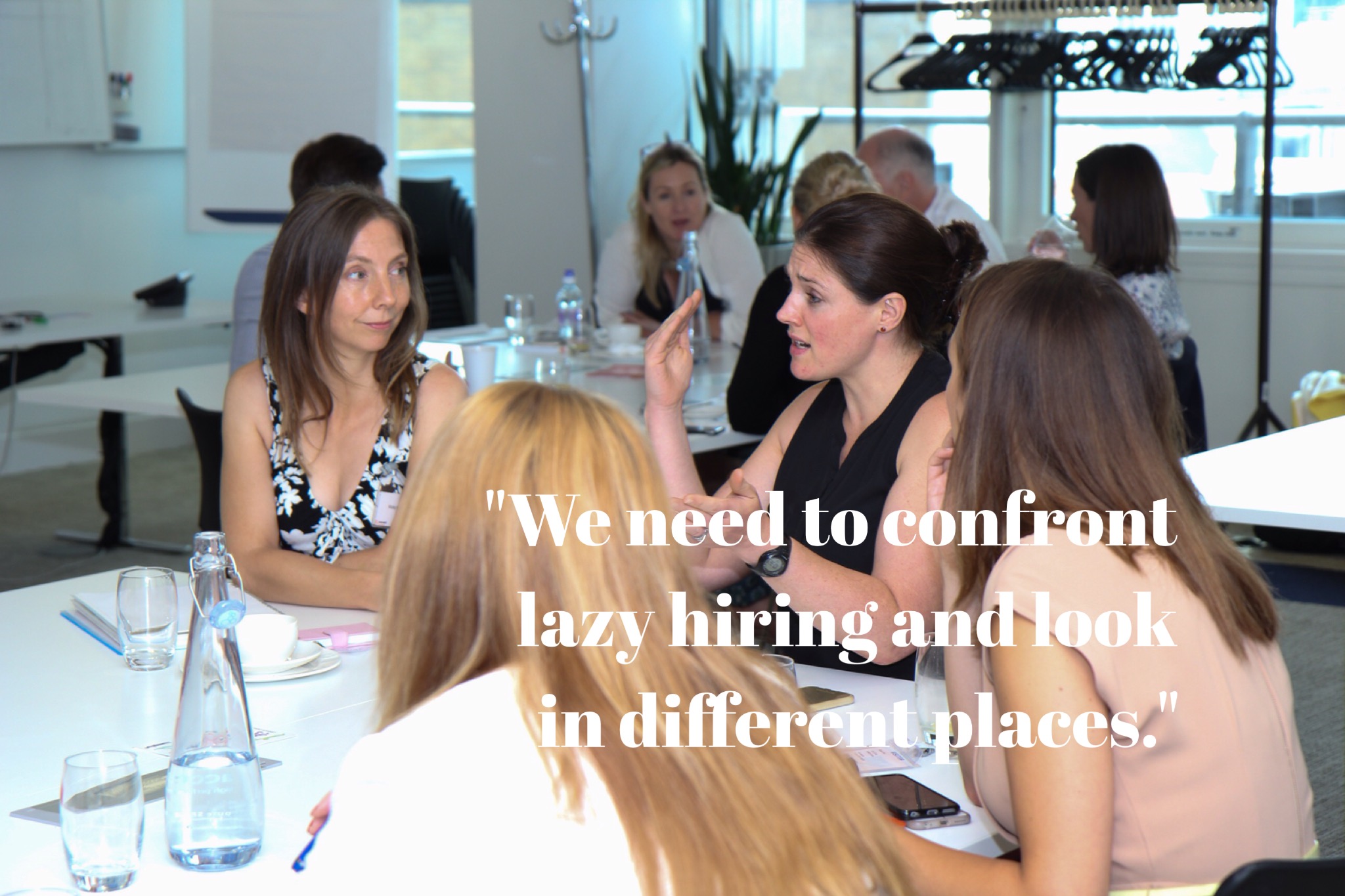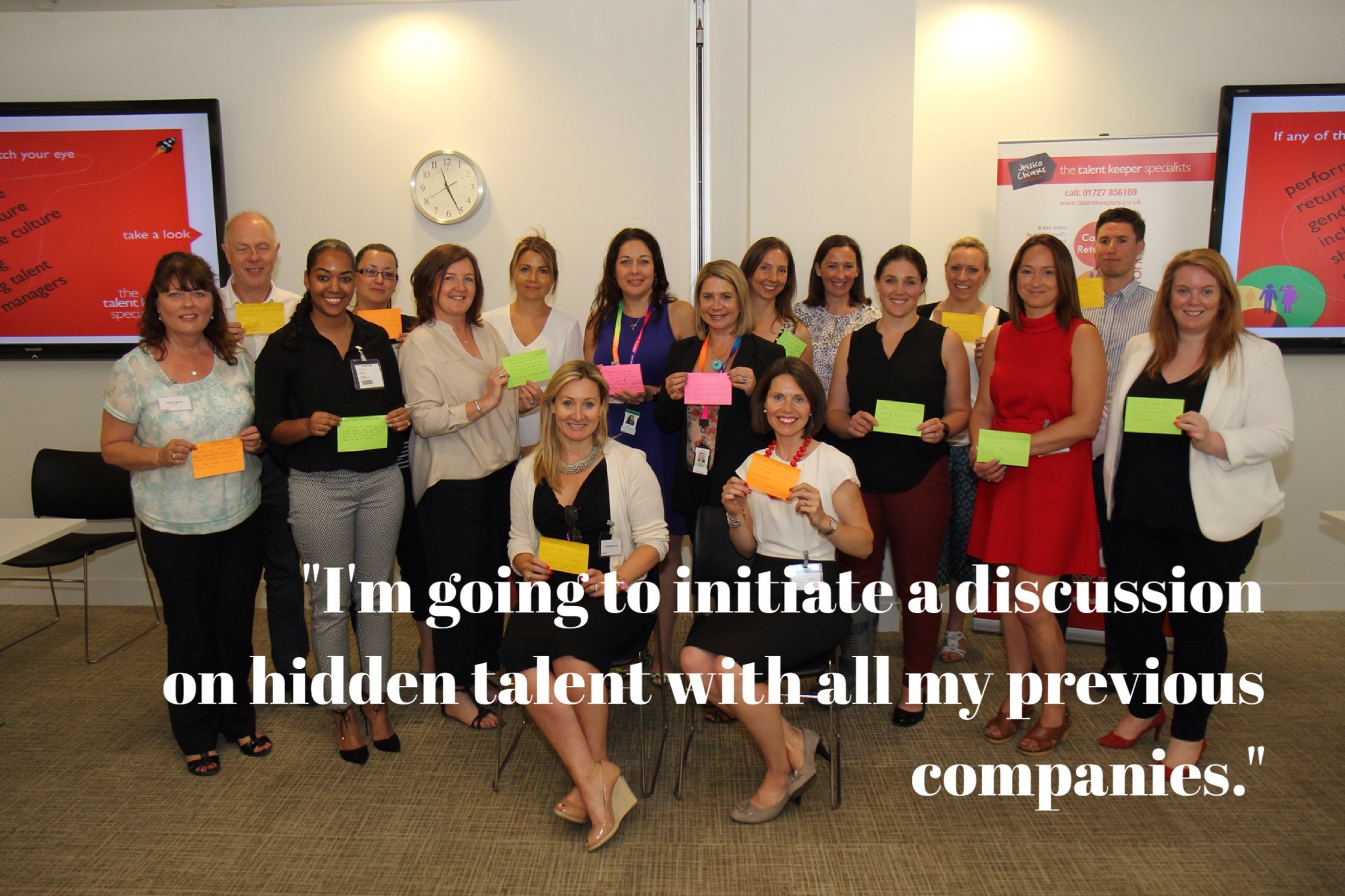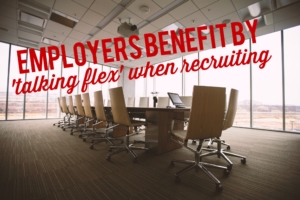A talent-keeping comment piece by Jessica Chivers
Long-term profitable businesses are, in theory, good places to seek best practice on many fronts; their profitability suggests they’re efficient and effective on everything from product design to marketing to recruitment and retention. And whether they’re viewed as such by employees or not, profitable businesses are scientific undertakings – observations are made, data is gathered, analyses undertaken and approaches across all business units and functions refined, axed or substituted according to whether they lead to a desired result. On this basis it’s my view that businesses would do well to incorporate social scientists’ research findings on gender, into their businesses for the sake of long-term profitability (if not the moral argument).
You might prefer to take away this lengthy post as a pdf.
This article sets out five evidence-based suggestions for shaking the gender agenda to increase women’s professional success. And just to recap, research has found that organisations with the best record of promoting women to high positions are between 18 and 69 % more profitable than the median organisations in their industries (see Adler, 2001)[i] and that’s why women matter (from a scientific, profit-oriented point of view). These recommendations may fly in the face of what’s gone before in your organisation; they may seem wild or uncomfortable or appear impossible to implement. They’re anchored in research and they’re here to stretch the imagination.

Original image source: Your Loss, Ioannidis C & Walther N, 2010 (www.yourlossbook.com)
1. When recruiting, strip the gender from candidates’ CVs
A study by Harvard and Princeton economists Goldin and Rouse[ii] way back in 2000 found a change in audition procedures in symphony orchestras led to a surprisingly large leap in the number of successful female candidates. What did they do? They put a screen between the recruiting panel and candidates so the recruiters could only hear, but not see the candidate. The researchers estimate that the switch to this gender-blind style of audition accounted for 30% of the increase in the proportion of women among new recruits. Whilst it might be tricky to interview candidates in a way that doesn’t reveal their gender, this technique could be used at the CV-sifting/short-listing stage.
2. Ask colleagues to pitch for one another’s pay and bonuses
Research by the Chartered Management Institute[iii] finds that men stand to earn over £141,500 more in bonuses than women doing the same role over the course of a working lifetime. Part of this may be down to men and women’s differing propensity to pitch for resources and opportunities[iv] and part of it down to unconscious bias in the minds of awarding managers. To put pay and bonuses on equal footing it could be an idea to ask colleagues to pitch for one another’s salary increases and share of any bonus pool. The figures could be aggregated and ranked to help awarding line managers make decisions
Male colleagues could also play a role in encouraging their female peers to pitch for rewards and opportunities commensurate with their ability and output through a buddying programme. Such a programme could match male and female colleagues in non-compete roles according to grade/seniority – a sort of peer to peer mentoring scheme – and this could also be useful in building links across the organisation for broader business benefit.
3. Start talking about how negative unconscious bias towards women affects us all
No one wants to think they’re biased and yet research by psychologists Uhlmann and Cohen in 2007 found that people who perceived themselves to be the most impartial were actually more biased in favour of men[v]. One of our clients has positioned line managers’ attendance at a diversity awareness day as essential for their ‘licence to manage.’ Even without formal learning events such as this, there are ways to get the message into people’s consciousness. It’s good practise to ask ‘what assumptions could we be making here?’ in all areas of business so why not extend that practise to include ‘what bias might we/I be exhibiting here?’ in team meetings, recruitment activities, salary negotiations and when responding to any decisions that affects a colleague’s career success. A simple poster displaying these phrases on the walls of offices could help remind.
4. Agree evaluation criteria for job candidates, upfront
Uhlmann and Cohen also found that evaluators of identically described male and female candidates for the job of chief of police shifted the goal posts in favour of men by heightening the importance of a particular characteristic when the male candidates possessed it and ‘down-playing’ a quality’s significance when they didn’t.[vi] An easy way to strip this out is to remove names from CVs and agree evaluation criteria and each item’s relative weight, before looking at CVs and applications forms.
5. Recruit men whose wives work and recruit wives of existing male employees
It stands to reason that if you’re keen to promote women, employees who are in hiring positions need to have a positive regard for women’s capabilities. A robust study[vii] published in 2012 of 718 married male participants found that employed husbands in traditional marriages, compared to those in modern marriages, tend to (a) view the presence of women in the workplace unfavourably, (b) perceive that organisations with higher numbers of female employees are operating less smoothly, (c) find organisations with female leaders as relatively unattractive, and (d) deny, more frequently, qualified female employees opportunities for promotion.
Thinking practically, this could mean looking at your organisation’s approach to who interviews candidates for a job. For instance, a married senior male manager whose wife doesn’t work may be consciously or unconsciously biased against hiring a woman. To avoid capable women being missed from shortlists or passed over for the job in this instance, a mixed panel (in more ways than on the usual dimensions) could be significant.
On the flipside, the research points to ‘does your wife work?’ being a significant question to put to male candidates at job interview – especially if your organisation has a poor reputation around recruiting and promoting women, that it wants to shed. We know that might have employment lawyers squirming in their seats, although we’re not aware of any discrimination cases where a male candidate has taken offence at such a question.
In addition to these five evidence-based suggestions for shaking the gender agenda to increase women’s professional success we make three more radical proposals:
6. Share data about who’s asking for pay rises and promotions
It stands to reason that once a woman is made aware of her male peers asking for pay rises and promotions (often given as a significant reason for gender pay inequality) it is likely to stir her into action. Sheryl Sandberg writes in her book Lean In: Women, Work and the Will To Lead on what made female promotions rise at Google: “Goole has an unusual system where engineers nominate themselves for promotions and the company found that men nominated themselves more quickly than women. The Google management team shared this data openly with the female employees, and women’s self-nomination rates rose significantly, reaching roughly the same rate as men’s.”
7. Set targets for women with children on UK boards
The 2011 ‘Women on Boards’ report prepared by Lord Davies[viii] which recommended introducing quotas for women on UK boards (on the basis that at the time only 12.5% of positions on FTSE 100 boards were held by women and as of August 2013 has risen to 17.3%[ix]) doesn’t address the ‘mother effect’ on women’s careers. We have a hunch[x] that there are more childless women than childless men in the top jobs in UK businesses because women’s careers are more likely to be negatively impacted by becoming a parent, than men’s. On this basis, wouldn’t it be something to sing and dance about to say you’re an organisation who fuels working mothers’ success as well as women more broadly?
8. Set targets for women at mid-senior management level
Finally, putting aside thoughtful arguments from both the ‘yes’ and ‘no’ camps of women-at-the-top quota debate, there needs to be a strong pool of women at every level below board level for those women to eventually be ready to rise to the top. Yet the research tells us that the number of women drops significantly at middle management (about the time women start to have children).
From the Women on Boards report:
Male and female graduate entry into the workforce is relatively equal. This equality is maintained at junior management positions but then suffers a marked drop at senior management levels. The reasons for this drop are complex, and relate to factors such as lack of access to flexible working arrangements, difficulties in achieving work-life balance or disillusionment at a lack of career progression. The UK will need an additional five million highly qualified workers within the next ten years to compete globally. Raising the proportion of women in the workplace to that of men would cut the gap to three million. However, the wider issue of women in the workplace is beyond the scope of this Review, we would only note that firms are investing in developing talented women, only to lose them before they reach senior management levels.
Targets for women at mid-senior level may boost the efforts organisations make to keep, support and stretch their female talent during the childbearing years. If organisations do this, the quota debate may become redundant. Now that’s what we call shaking the gender agenda.
If you’re keen to consider how any of these recommendations could be practically implemented please be in touch. Our office number is 01727 856169 or e-mail hello@talentkeepers.co.uk. Click to download a pdf copy of this post.
[i] Adler, 2001. Women in the Executive Suite Correlates to Higher Profits. Also see Joy, L., Carter, M.N and Wagener, H.M and Narayanan, S. (2007). The Bottom Line: Corporate Performance and Women’s Representation on Boards. Catalyst, which found companies with more women on their boards were found to outperform their rivals with a 42% higher return in sales, 66% higher return on invested capital and 53% higher return on equity.
[ii] Goldin, C. and Rouse, C. (2000). Orchestrating Impartiality: The Impact of Blind Auditions on Female Musicians.
The American Economic Review, 90, 715-741.
[iv] See Babcock, L. and Laschever, S.
Women Don’t Ask: Negotiation and the Gender Divide (Princeton University Press, 2003).
[v] Uhlmann, E.L. and Cohen, G.L. (2007). ‘I Think It, Therefore It’s True’: Effects of Self-Perceived Objectivity on Hiring Discrimination.
Organizational Behavior and Human Decision Processes, 104, 207-223.
[vi] Uhlmann, E.L. and Cohen, G.L. (2005). Constructed Criteria: Redefinign Merit to Justify Discrimination.
Psychological Science, 16, 474-480.
[vii] The consistent pattern of results found across multiple studies employing multiple methods and samples demonstrates the robustness of the findings. Desai, S. D., Chugh, D. and Brief, A. (2012). Marriage Structure and Resistance to the Gender Revolution in the Workplace. Available at SSRN: http://ssrn.com/abstract=2018259 or http://dx.doi.org/10.2139/ssrn.2018259
[ix] Sealy, R. and Vinnicombe, S. (2013). The Female FTSE Board Report: A False Dawn of Progress for Women on Boards. Cranfield University School of Management.
[x] Jessica Chivers approached Women on Boards UK (
www.womenonboards.co.uk) and Opportunity Now (
www.opportunitynow.org.uk) 20/8/13 seeking data on gender split of parents and non-parents on FTSE100 boards. Women On Boards does not believe the data has been captured.
 Founder of the 30% Club, ex-CEO of Newton Asset Management and mother of nine, Helena Morrissey is full of sage advice for business leaders and women who want to see gender balance in the workplace in her book “A Good Time to Be a Girl”. One of our favourite extracts is the re-counting of Andy Haldane’s advice on how to increase diversity in teams.
Founder of the 30% Club, ex-CEO of Newton Asset Management and mother of nine, Helena Morrissey is full of sage advice for business leaders and women who want to see gender balance in the workplace in her book “A Good Time to Be a Girl”. One of our favourite extracts is the re-counting of Andy Haldane’s advice on how to increase diversity in teams.